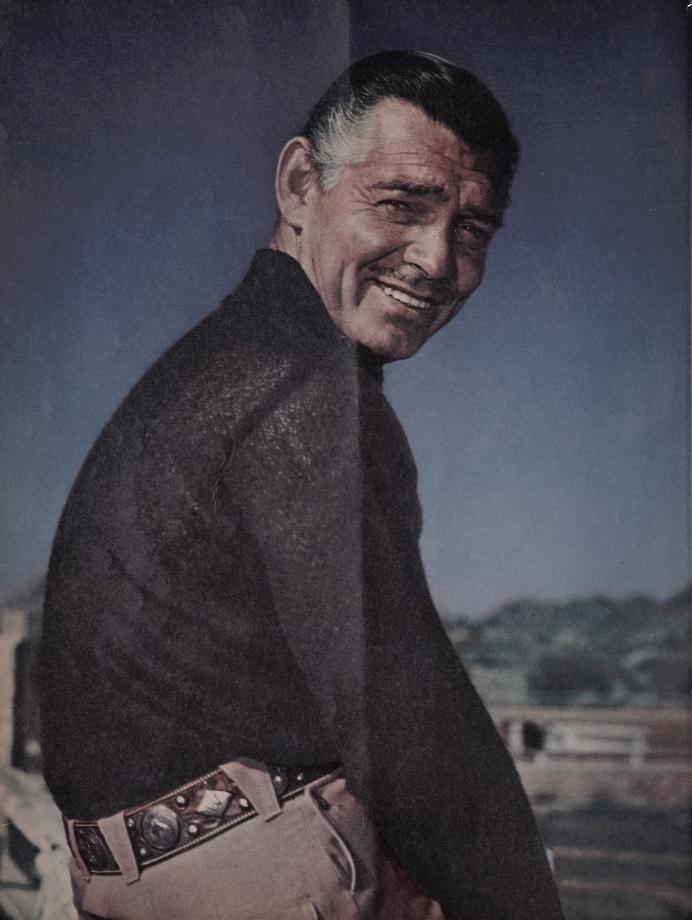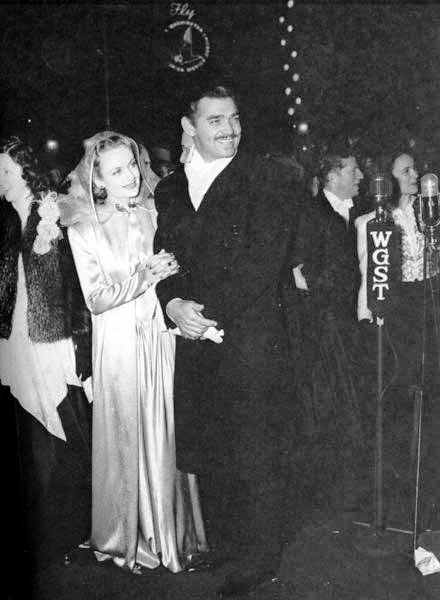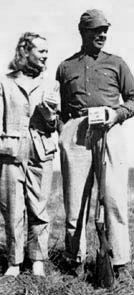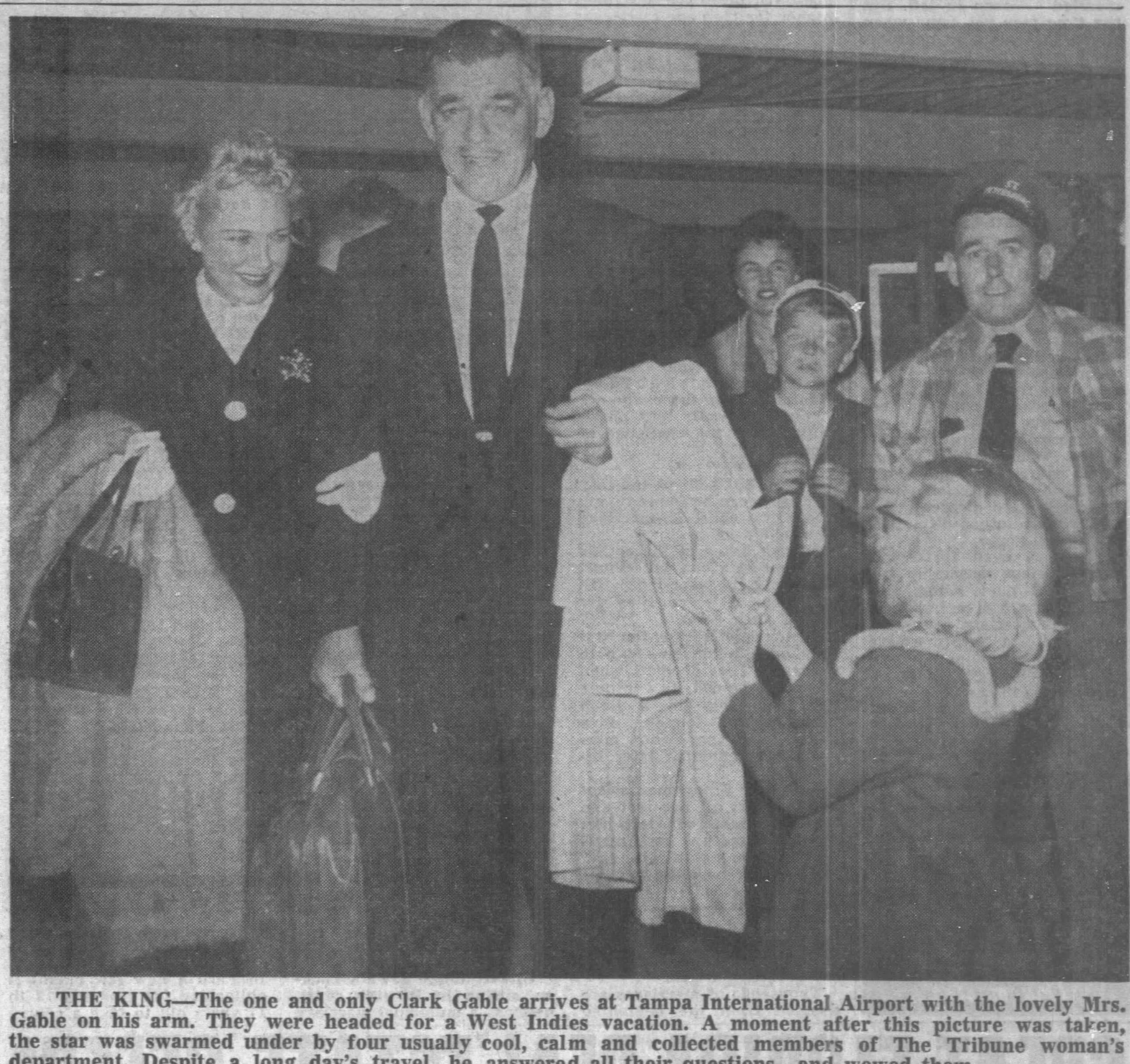New Articles!

You’d think considering that Clark Gable has been dead for nearly 62 years that I would run out of material; that one day there would just be no articles left. That day is nowhere in the near future!
There are five new articles in the Article Archive today, and I must admit that none of them are especially remarkable. So instead of devoting a post to each, here they are and they are quite diverse and span thirty years!

1933: Is the Future Threatening Gable?
This article speculates whether Clark Gable’s fast ascension into super stardom will cause him to flicker out quickly. (Spoiler alert: it doesn’t).
Leslie Howard, himself, never learned exactly the truth of the situation. When he had finished his strong, sympathetic part in the picture, a part in the picture, a part greatly enhanced in appeal by the very skill and force of Gable’s “villain” portrayal, he shook the dust from his heels, and disgustedly entrained for New York. Films were jolly well off on one of their “type” stampedes, he thought, so they held no lure for him.
Then some lady columnist or other created a saying about Gable and women. It was copied and repeated widely, in many versions. Ladies, she declared coyly, love brutes best, after all; no red-blooded American woman could resist the big, rough, unscrupulous, but handsome man such as Clark portrayed. All the vaunted feminine love of finesse, gentleness, and such “finer qualities,” she opined, was just so much baloney!
Some thousands of American women took her seriously and launched an indignant protest! And, because Leslie Howard had played hero to Clark’s villain, countless women said by inference that they could go for Leslie in a bigger way than for Clark! Back rolled the tide in favor of “gentleman types.” Howard, amazed, and not sure he was pleased, was dragged back to Hollywood.
But don’t rush to the conclusion that this is the danger now confronting Clark—that he may be swept out with the ebbing of the “he-man” tide. Producers speedily discovered that Clark’s followers were still as many and as loyal as ever, and perceived that such an actor and personality could hold his place in any screen era.
Yeah especially after Gone with the Wind, I don’t think a lot of women were clamoring for Leslie Howard over Clark Gable…

This one is typical of the post-war articles on Clark. He’s lonely, who will be the nest Mrs. Gable, he’s still a great guy, everyone loves him.
Gable continues to live simply on his twenty-acre ranch in the valley. His eight-room white house is virtually as the late Carole Lombard decorated it, with warm bright colors and big stone fireplaces, and his gun room is still the informal gathering place for friends when he entertains. He dabbles at farming—a few chickens, one cow, a little citrus—but doesn’t expect to make money on it. He has a couple from Iowa taking care of things. He gave up his horses when he went to war, and he hasn’t replaced them. “Cost too much now—they’re asking all kinds of prices even for broken-down old nags,” he says.
He is still a great one for hunting and fishing. It was probably by virtue of these periodic outdoor jaunts that he shed twenty pounds before reporting for “The Hucksters.”
“Didn’t plan it that way,” he grins, “and I surely didn’t do any dieting.” His appetite—for steak, potatoes and all he-mannish fodder—is unfailing.
Once there was talk that Gable was thinking of retiring from pictures. “No,” he says, “I’m not. I’ve said I’d like to do just one picture a year. My contract gives me four months off between pictures now, and that should work out to about one film a year.

This article is similar to the one before, with the what a great guy he is and who is he dating now. I do like these little snippets of “inside the man,” so to speak:
Flattery and fawning adulation make him sick; he dismisses them with a well-turned phrase or a simple “Are you kidding?” He has equal contempt for conceited people and poseurs. He looks for loyalty in friends, and gets it.
He likes women who are good sports and gay companions; who are chic and well-groomed on proper occasions, but who can be informal, too. He has dates with long-time-friend Mrs. Dolly O’Brien, with Ava Gardner, with Anita Colby and Virginia Grey but denies any romance.
Gable likes to laugh, is an amusing conversationalist, an excellent listener and good raconteur, if not exactly a crisp wit of the Noel Coward school.
He dislikes buffet dinners. He likes to sit down to a sturdy, well-cooked meal, served on time. He still likes turtleneck sweaters, but still dislikes dancing. He hates overheated rooms, gossip, backseat drivers.
Well who does?

1962: They Wanted to Steal My Baby!
We skip ahead 14 years–Clark married, divorced, married again and died. And then his son was born after his death. I’d often heard these tales of his widow Kay receiving kidnapping threats and that is why she stopped giving interviews or having the baby photographed. There really wasn’t much to the story however. This article goes into great detail of meeting Kay at the ranch while she’s surrounded by police and really the whole thing was some guy overheard “swarthy fellas” saying they were going to kidnap the Gable baby. Nothing came of it.
A call had come in at 4:30am, from a man who identified himself as David Treganowan, thirty-four. He said he’d just overheard a conversation between four men in a Los Angeles café. “I could be wrong,” Treganowan said, “but it sounded as though they were planning to snatch the Gable baby.”
The men were sober and well dressed, he related, but added that they looked tough. He described them as dark, swarthy types—“the kind you see playing heavies on TV.”
Treganowan willingly came down to the station for further questioning. He explained he heard only bits and snatches of the conversation, but it was enough to convince him to call the police. He thought he heard one of the men remark, “This will make the Gable baby even more famous than his father.”
The men seemed to be discussing a certain back entrance to the ranch and the armed guard permanently employed by Mrs. Gable since John Clark’s birth. Treganowan thought he heard the phrase, “We may have to kill him.” He heard other comments about “the ranch,” “the baby” and “the kid.” The quartet left the restaurant while he was making his call to the police, Treganowan said, and he was unable to get a good look at their car.
Treganowan’s story was enough to cause the police to act. Mrs. Gable’s two attorneys promptly hurried to the station to talk to him. Later, after conferring with Kathleen at the ranch, they hired private guards to further augment the police protection. The agency was instructed to send “good, tough men who know how to shoot.”
By this time the tension and excitement was apparent at the ranch. The phone was ringing constantly. Detectives were coming and going. Reporters and photographers had descended on the place. Mrs. Gable was polite, she even offered them coffee. But she was adamant: No interviews, no pictures of the property or the children.

Well so much for keeping John Clark out of the press. This article, published a year later, is really just Clark Gable’s son is carrying on without his father. Not much to it other than that.
John Clark will grow up in the home his father worked hard to build. It is situated on twenty-two acres in Encino, California. The land is given over to fruit orchards, facilities for riding horses, stands of tall trees and a big batch of country meadow.
When Gable died, everyone thought Kay would sell the ranch.
“I couldn’t,” Kay explains, “Clark loved this place and was never completely relaxed anywhere else. He had turned down many offers when he was alive and once told me that he never wanted to sell the ranch at all.”
The house in which the Gable family lives in sided with great white clapboard and white stone, done in Early American. It is a house that radiates comforts, not luxuries. Excepting its great size, it looks like any other American home of that style. Yet those who visit it invariably come away speaking of “its warm, quiet atmosphere and understated elegance.”
A new wing, carefully designed by Clark and Kay, was just about to be added when Gable passed away. The wing was built—just the way Clark planned it.
For John Clark, the ranch is the whole world. It is a world that his father loved—it scorns pomp, and every nook and cranny reflects the simple dignity of the man who made it. Some day John will now every tree, every animal. He’ll climb for his apples even if it means he has to tear a hole in his blue jeans and skin his knees. And he’ll have an ally in Bunker—who already shows a keen understanding of Gable’s “no bunk” philosophy. Bunker adored his famous stepfather and he has been left with a boyish but intelligent aversion to pretense—especially of material things that are so often too important in the lives of the young rich.
Kay did eventually sell the ranch and move to Beverly Hills.
You can read all these articles in their entirety and (200+ others!) in The Article Archive.





One Comment
Dan
I’m just seeing these right now lol!! Amazing additions and I just love seeing anything written from the past about Hollywood figures because it just has such a different flavor to how stroies are approached now